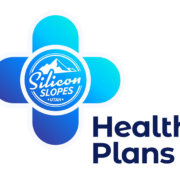What are Silicon Slopes Health Plans and What Do They Mean For Your Utah Business?
They could mean great rates on group health insurance, and if the medical loss ratio is low for your company, you might actually get a rebate check from your plan administrator.
If you own a small business, you understand the challenge of finding affordable, quality health insurance coverage for your employees. The Kaiser Family Foundation estimates that businesses with five employees could pay $100,000 in the first year for coverage — not including copays and coinsurance.
Last week, Silicon Slopes, a 501(c)(3) nonprofit organization empowering Utah’s startup and tech community, introduced Silicon Slopes Health Plans. Developed in partnership with University of Utah Health and EMI Health Plans, these plans are partially self-funded, and look to move beyond the transactional approach, where it’s all about paying premiums and claims, to put more focus on the ultimate goal of keeping employees healthy.
So how exactly do these plans work, and how can you know if they’re right for your company?
First, let’s look at a typical “fully insured” health plan. This is the model we’re all familiar with where the employer pays a fixed monthly premium to the health insurance carrier, and in return, the carrier pays all eligible member claims. If the premium collected is greater than the amount of the claims, the carrier gets to keep the excess as profit.
With a partially self-funded health plan, the employer contracts for the assistance of a health insurance carrier or third-party administrator (TPA) to administer all aspects of the health plan. The employer funds the claims payments. Something called “stop loss” insurance pays any catastrophic claims for conditions such as cancer or premature birth. While claims will vary from month to month, the employer reaps the rewards when few claims need to be paid. Any surplus funds can be reserved for future claims.
There are several attractive features of a partially self-funded plan (like the Silicon Slopes plans), including a statistical likelihood that it will cost less.
Other benefits of a Silicon Slopes Health Plan include:
- As the employer, you can choose whether providers are in IHC network or non-IHC network
- The plans are administered by University of Utah Health or EMI Health
- These are “medically-underwritten” plans which means if your staff is very healthy, your company can actually see the benefits through lower rates
- You’ll be pooled with other like-minded employers
- You need not be a tech company or a start-up to benefit from this plan
- You can qualify to participate with as few as two (2) full-time (W2) employees
- You can sign up your company to participate at any time, with the starting date at the first of the next month
There are some important considerations to take into account when looking at these plans. Ark Insurance Solutions can help. Reach to us today for a no-cost consultation to determine if a Silicon Slopes Health Plan is right for your business.




















